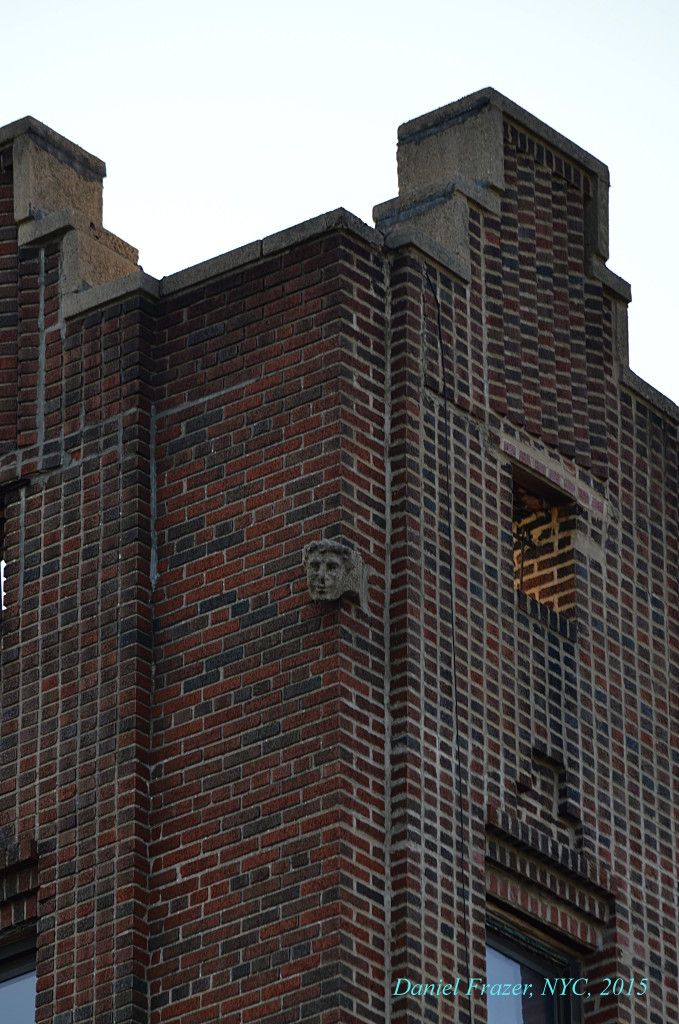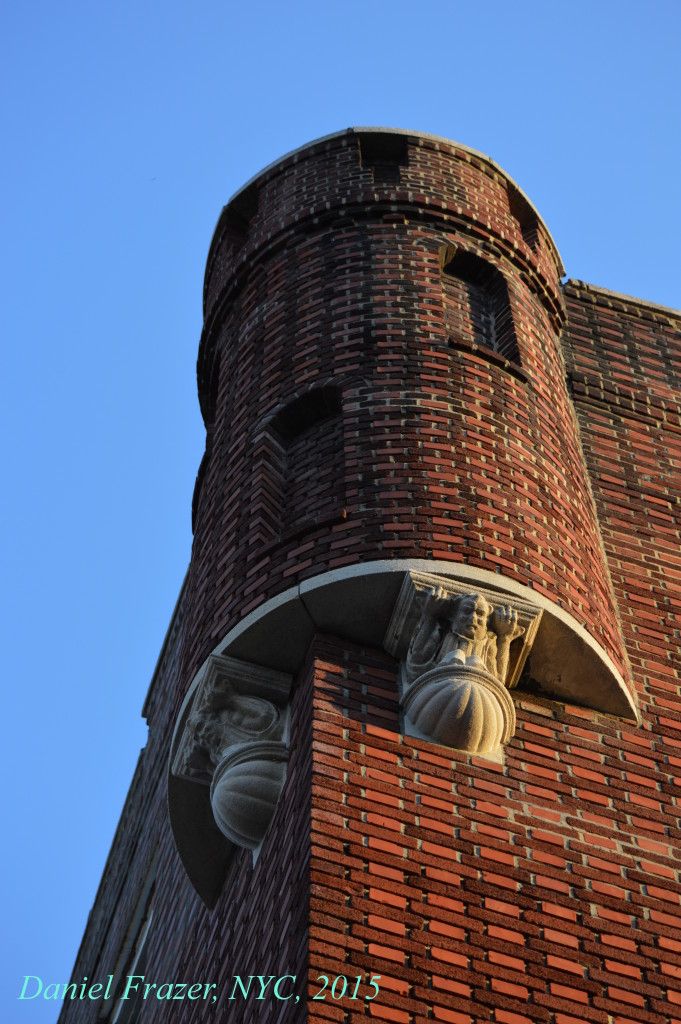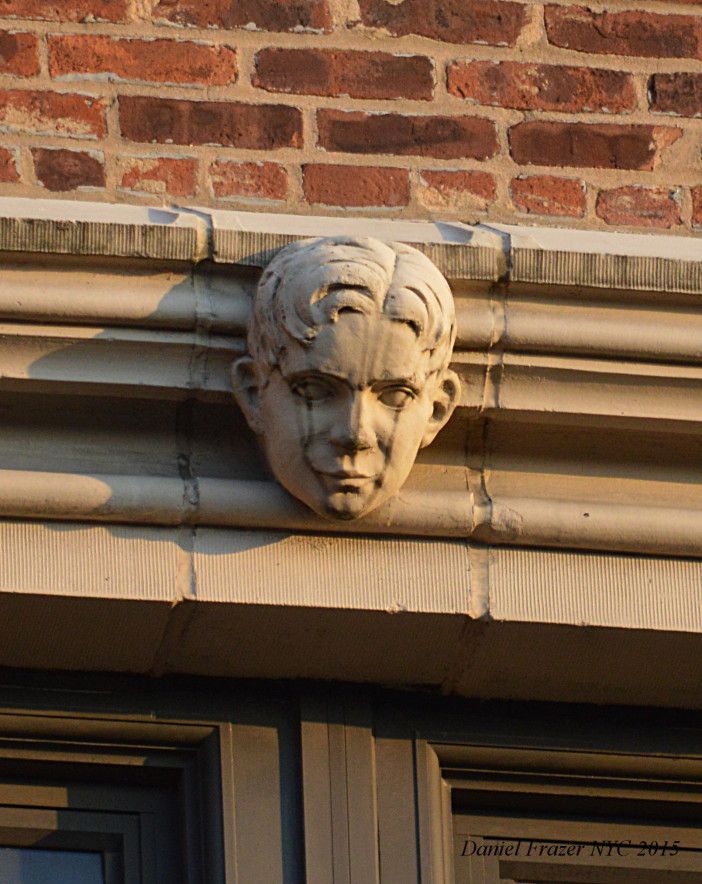Watching From Above: The Hauntingly Beautiful Gargoyles Of Bensonhurst

The thing that perhaps most distinguishes one Brooklyn neighborhood from another is its unique architecture.
Brooklyn, being one of the oldest sections of New York City, is home to a myriad of strange features from our past. Perhaps none are stranger than the many gargoyles that can be found clutching the corners of Bensonhurst’s old buildings. In fact, if you look closely, you will notice many of our neighborhood’s gargoyles vomiting or scowling back at you.
Many of the buildings in Bensonhurst are more than 100 years old, and these relics reflect the aesthetics, functionality, and whimsy of our past — but today, these faces blend in with our present, going mostly noticed.
What is a gargoyle, anyway?

When many think of a gargoyle, the image of a strangled, tortured-looking soul thumbing out of the side of a church comes to mind — and that’s for good reason. One of the original purposes of gargoyles was to represent the evils and fears of the outside world to parishioners who could not read. Gargoyles represented what was to be feared and expelled from the church.
However, clever architects found another excellent usage for gargoyles — to direct rain water away from a building’s facade. The word gargoyle comes from the French word gargouille, which means to gurgle or rumble. Many gargoyles, especially those affixed to churches and other large ornate buildings, collect and disperse rain water via a pipeline along the “throat” of the figure and help minimize the level of erosion on the stone facade. However, while this is especially found in European gargoyles, the gargoyles of Brooklyn are mostly decorative and would actually be better named as chimeras since they usually do not have a function. A chimera is a gargoyle that does not utilize a water pipe.
Who made the gargoyles?

It’s unclear with many gargoyles who designed them and why the designers picked the particular portraits, or animals that they did. However, looking at the gargoyles will often lead you to be able to draw conclusions about the artist’s origins and interests. One such building, pictured above, was clearly made by a dog lover. Two life-like dogs with eyes cast downward gaze at the sidewalk.
On other buildings, there may just be just one face carving — a life-like portrait with eyes looking at you. These are generally believed to be memorial gargoyles, or even portraits of buildings’ owners — no doubt sending a scary reminder to pay your rent on time.

While some gargoyles would have been designed by the architect who created the building, often they were designed by artists, some from as far away as Italy or France. A clue to determining the origin of a gargoyle is the amount of wear on the piece, as well as any apparent affixation lines (where the gargoyle would have been attached). While it is especially difficult to find the origins of Bensonhurst’s gargoyles, my research shows that many of our early buildings were designed by Italian immigrants, so it is reasonable to conclude that the gargoyles’ origins may have been from Italian immigrants as well.
A Communal Past
Walking around Bensonhurst, one gets a feeling for just how connected this community was in the past, and perhaps how colorful it was. Many of our older homes and buildings have stone relief daisies and roped cornices that at one point would have been painted fairly bold and striking colors.

Much like our view of the modern day Notre-Dame Church in France as an all drab, stone exterior, this is contrary to how it would have looked in the past. Much like the way our Bensonhurst neighborhood, the Notre-Dame church was once vividly colored and frequently covered in flowers. One of the most frequently seen relics of our past aesthetic in Brooklyn, are the remains of stone flower brackets. These brackets would’ve once held large pots of flowers from the bottom to the top floors.
Modern Austerity
According to one long-time Bensonhurst resident, the neighborhood fell into austerity around the beginning of the cold war and never quite warmed up.

“How do you care about a pretty building if you’re going to be nuked?” said Karen Glass, 84, a life-long Bensonhurst resident.
Glass said she remembers when they started filling in the post-war buildings which are noticeably plainer than the vivid pre-war buildings.
“Everything looks the same now. When I was a little girl, we cared,” she said, gesturing towards a large apartment building on Avenue P. From the third level, every few windows has the shocked face of a young woman in stone.

Around the time of the cold war, and in the subsequent decades, building construction slumped, leaving much of the features from the past both frozen and neglected. In the last 10 years, condos featuring sleek lines have become the construction choice — and they certainly won’t be including gargoyles.
Where to find Gargoyles
The best collection of gargoyles in Southern Brooklyn can be found across the length of Kings Highway through Gravesend and into Bensonhurst, stopping at about 16th Avenue. Most of these buildings are older and were designed by artists from Europe between 1890 and 1940.
Look on the corners of churches and schools, too. Schools, maybe in an effort to scare children inside, will often have some of the ghastliest of gargoyles adorning the buildings.

Despite our modern hustle, it’s always nice to reflect on the work of generations past. With so much of Brooklyn catapulting into modernity, it’s nice to see something that our neighbor have been admiring for generations, with hope for generations to come.



